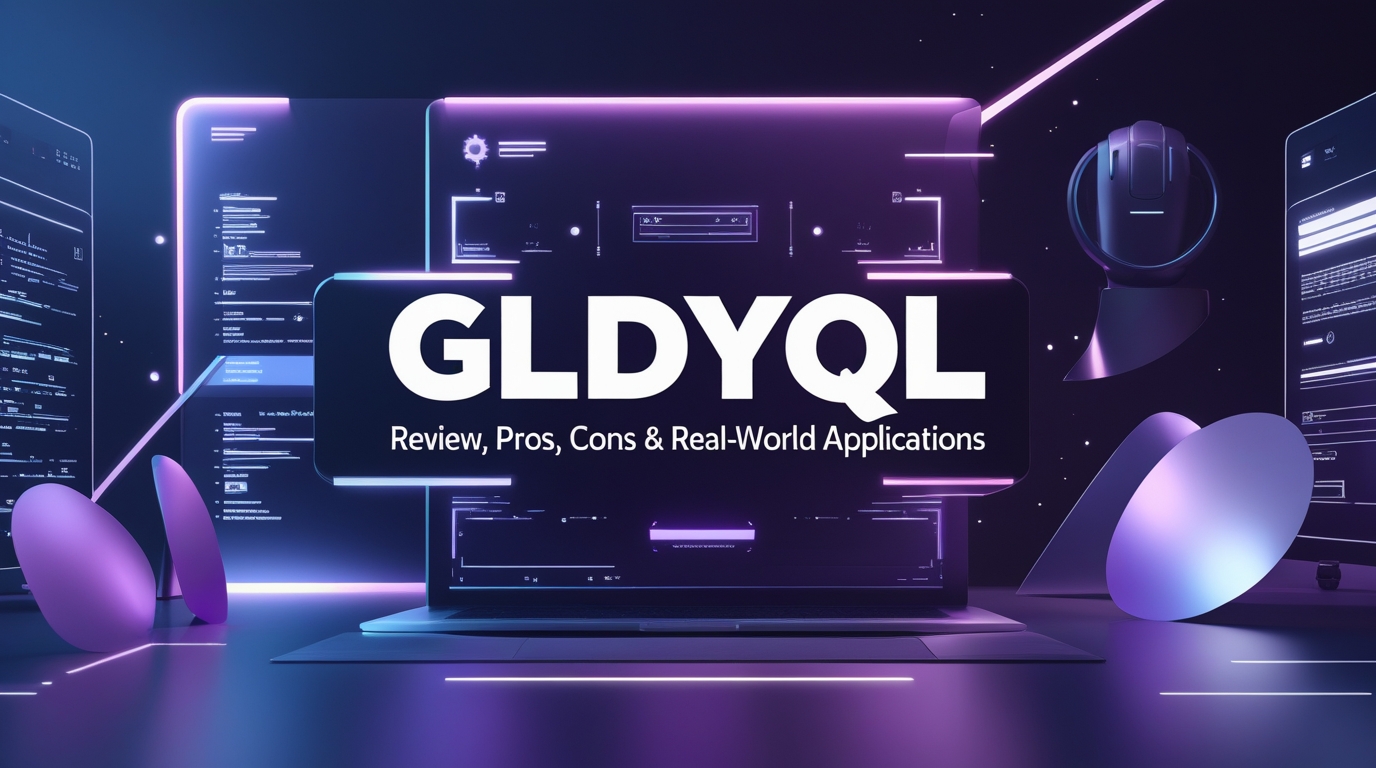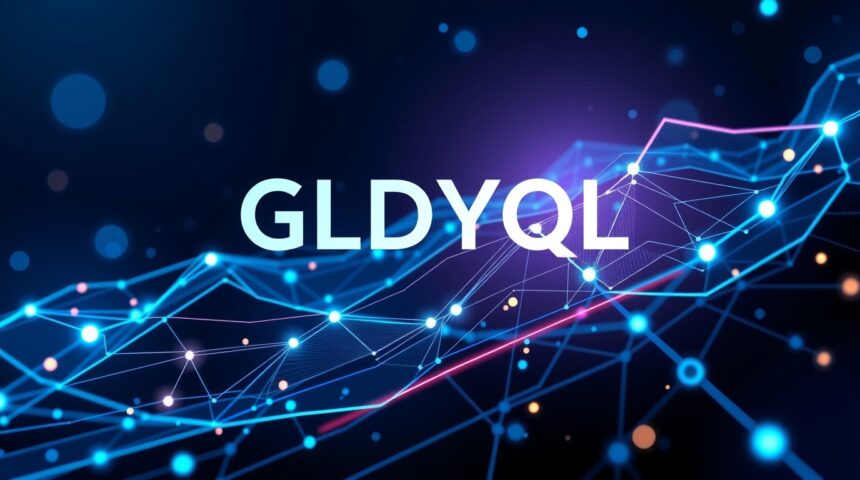In today’s fast-moving digital world, new tools and platforms appear every year promising to solve complex problems and make work easier. One of the emerging names gaining attention is GLDYQL. While the name may sound unusual at first, this solution has been making waves across different industries thanks to its versatility, adaptability, and ability to address both business and personal needs. For U.S. audiences, where technology adoption and digital transformation play a major role in competitiveness, GLDYQL stands out as a platform worth reviewing.
In this article, we’ll provide a comprehensive breakdown of GLDYQL, exploring its pros, cons, and real-world applications. We’ll also highlight where it fits in the broader market and how it compares to alternatives, so you can determine whether it’s the right solution for your situation.
What Is GLDYQL?

At its core, GLDYQL is positioned as a multi-functional tool designed to streamline workflows, improve efficiency, and support better decision-making. While its exact applications vary by industry, most users turn to GLDYQL for its adaptability and ability to integrate with existing processes.
Unlike single-purpose platforms, GLDYQL offers a blend of features that allow businesses and individuals to tailor it to their unique needs. From data management to productivity optimization, it has become especially relevant for organizations in the U.S. that want to remain agile in highly competitive markets.
The Pros of Using GLDYQL
When evaluating any software or platform, the strengths must be weighed carefully. GLDYQL has a number of advantages that explain its rising popularity:
-
User-Friendly Interface – GLDYQL is built with usability in mind, meaning even those without advanced technical skills can navigate it effectively.
-
Integration Capabilities – It connects smoothly with existing tools and platforms, reducing the friction that often comes with adopting new technology.
-
Scalability – Whether you’re a small business owner or part of a large corporation, GLDYQL adapts to the size and scope of your operations.
-
Data-Driven Insights – The platform provides analytics and reporting features that help users make informed decisions quickly.
-
Support and Updates – Active development and customer support ensure that U.S. users receive timely fixes and improvements.
Together, these benefits make GLDYQL a reliable option for organizations that prioritize both performance and ease of adoption.
The Cons of GLDYQL
No solution is perfect, and GLDYQL comes with its share of drawbacks. Being aware of these limitations can help set realistic expectations before committing:
-
Learning Curve for Advanced Features – While the basics are easy, more complex functions may require additional training.
-
Cost for Premium Plans – Smaller businesses might find higher-tier subscriptions challenging if they’re operating with limited budgets.
-
Limited Offline Capabilities – GLDYQL performs best in connected environments, making it less ideal for users who work in low-connectivity areas.
-
Customization Boundaries – Although adaptable, some industries may find the customization options too narrow for specialized needs.
These challenges don’t negate the value of GLDYQL but highlight areas where potential users should carefully assess alignment with their goals.
Real-World Applications of GLDYQL
The true strength of GLDYQL lies in how it’s being used across multiple industries in the U.S. Here are some of the most impactful applications:
-
Small Business Operations – Entrepreneurs use GLDYQL to organize tasks, monitor performance, and improve customer engagement.
-
Healthcare – Clinics and health professionals adopt it for scheduling, records management, and streamlined patient communication.
-
Education – Teachers and schools leverage GLDYQL for lesson planning, student progress tracking, and resource sharing.
-
Corporate Environments – Enterprises use GLDYQL for data analysis, interdepartmental collaboration, and workflow automation.
-
Freelancers and Creators – Independent professionals employ GLDYQL to manage projects, deadlines, and client relationships.
This broad adoption illustrates how adaptable the platform is, bridging gaps across both personal and professional environments.
GLDYQL in the U.S. Market
American businesses value tools that can combine flexibility with measurable results. GLDYQL has resonated with this audience because it helps organizations remain efficient without adding unnecessary complexity.
For U.S. startups, where every resource counts, GLDYQL offers a cost-effective way to scale operations. For larger corporations, it ensures consistency across teams without demanding a steep learning curve. This balance explains why GLDYQL continues to grow in popularity in industries ranging from retail to tech services.
Comparing GLDYQL to Alternatives
In order to understand GLDYQL’s position in the market, it’s useful to compare it with alternatives. Many competing platforms offer either narrow specialization or broad, complex ecosystems that overwhelm new users.
GLDYQL strikes a middle ground by offering:
-
More flexibility than rigid niche platforms.
-
Simpler navigation compared to overly complex enterprise software.
-
A pricing model that competes well with premium competitors.
While it may not be the perfect fit for every single use case, GLDYQL stands out as a balanced option for U.S. users who need both performance and practicality.
Who Should Consider GLDYQL?
Not every tool works for every audience, and GLDYQL is no exception. Based on its features and real-world feedback, the following groups are best suited for this platform:
-
Small to Mid-Sized Businesses that need a scalable solution.
-
Professionals Seeking Efficiency in their day-to-day operations.
-
Educational Institutions aiming to enhance collaboration and productivity.
-
Enterprises that want to integrate without overhauling their existing systems.
Those who value adaptability, analytics, and ease of use will find GLDYQL particularly appealing.
Potential for Growth and Future Outlook
The technology market in the U.S. evolves quickly, but GLDYQL appears well-positioned for sustained relevance. With continued updates, expanded integrations, and greater customization options, it has the potential to remain competitive against established names.
If it continues to prioritize user feedback and address its current limitations, GLDYQL could expand into even more industries, becoming a staple for both professional and personal productivity.
Best Practices for Getting Started with GLDYQL
For U.S. users considering adoption, here are some practical tips to maximize value from GLDYQL:
-
Start with Core Features – Learn the basics before diving into advanced tools.
-
Integrate Gradually – Connect GLDYQL to your existing workflows step by step.
-
Leverage Analytics – Use the built-in reporting features to guide business decisions.
-
Train Your Team – Ensure that everyone understands how to use GLDYQL effectively.
-
Monitor ROI – Track time savings, productivity gains, and cost reductions to measure impact.
These steps help reduce the learning curve and improve long-term adoption success.
Final Thoughts
GLDYQL is more than just another digital tool—it’s a versatile, adaptable platform that offers genuine value to U.S. users across industries. Its pros clearly outweigh its cons for most businesses and individuals, making it a worthy consideration for those who want to improve efficiency, collaboration, and decision-making.
While it has some limitations, particularly for users with specialized needs or tight budgets, its strengths in usability, scalability, and integration make it an excellent option. With its real-world applications expanding daily, GLDYQL has proven that it’s more than a passing trend—it’s a tool that can genuinely shape the way people work and collaborate.
Frequently Asked Questions (FAQs)
1. What is GLDYQL used for?
GLDYQL is used for managing workflows, analyzing data, improving collaboration, and streamlining tasks across industries such as business, education, and healthcare.
2. Is GLDYQL suitable for small businesses?
Yes, small businesses in the U.S. find GLDYQL especially useful because it provides scalable solutions that grow alongside their needs without requiring heavy investment.
3. Does GLDYQL require advanced technical skills?
No, GLDYQL is designed with a user-friendly interface. Beginners can quickly learn the basics, although advanced features may require additional training.
4. Can GLDYQL integrate with existing tools?
Absolutely. One of GLDYQL’s strengths is its integration capabilities, allowing businesses to connect it with their current systems and processes.
5. Is GLDYQL worth the cost?
For most users, yes. While premium plans may feel expensive for small budgets, the efficiency gains and time savings often justify the investment.












